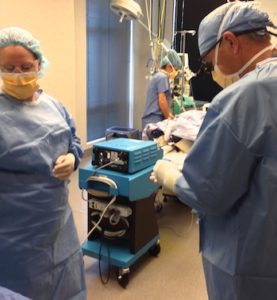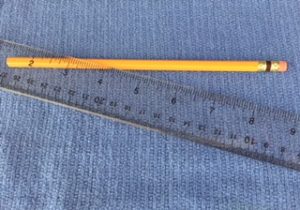Breast Lift, Reduction or Enlargement to Correct Sagging?
January 17th, 2018
How do you know if you need a breast lift, a breast reduction or breast enlargement to correct sagging to make your breasts more youthful looking? Let’s start with the “pencil test” because it is a simple and an effective way to tell if breast lift surgery might be helpful to correct sagging or droopy breasts. The pencil test helps to identify true sagging. Place a pencil under your breast where it attaches to your chest and if your nipple hangs below the pencil when you sit or stand, then you might consider a breast lift.
True sagging or drooping of a woman’s nipples can occur following pregnancy or as a result of any dramatic weight gain/loss. True sagging refers to the location of the nipple position below the crease beneath your breast. I do not recommend breast lift surgery if nipples are above the crease or at the level of the crease. Breast enlargement is usually sufficient to correct the saggy breast shape in most cases. However, breast lift surgery is designed specifically to reposition the nipple and areola (pigmented skin around the nipple) upwards toward a more natural position. The natural position is about one half to three-quarters of an inch above the crease. Positioning them any higher than this can result in an odd breast appearance. The size of the areola can also be reduced during the procedure if desired by the patient.
Breast enlargement or breast reduction may be considered to change the size, shape and contour of the breasts, when a breast lift would not be indicated to achieve the desired improvement. As with all breast surgery, size is a personal choice and all options should be discussed during your consultation with your surgeon. Breast surgery is often part of the Mommy Makeover. See more specific information on Breast Procedures here.
Watch this video as our patient kindly shares her journey of restoring her breasts to a more youthful look following pregnancy. Thank you Lisa.
No Stitches After Cosmetic Surgery?
June 29th, 2016
 Is it true that all stitches need to be removed after cosmetic surgery? The short answer is no.
Is it true that all stitches need to be removed after cosmetic surgery? The short answer is no.
In the past, skin sutures (stitches) or skin staple closures needed to be removed after cosmetic surgery. Some surgeons still use removable skin sutures or skin staples to shorten the duration of surgery by quickly closing incisions using these older techniques, I do not. With the advent of modern absorbable stitches and surgical skin glue such as Indermil ®, which are FDA approved, the new technology makes removing stitches a thing of the past in my office. I find that by taking more time with incision closure during surgery, I can offer a better experience for my patients.
Choices: Absorbable stitches are simply absorbed by the tissue and replace the need for suture removal. Surgical glue is similar to “Superglue” and is now being used to close small skin cuts, lacerations and also as tissue closure for surgical incisions. How does surgical glue work? It is applied by an applicator to the skin. Once it comes into contact with the skin, the glue hardens rapidly and holds the edges of skin together nicely so the skin can heal.
I prefer to use surgical glue and absorbable stitches for several reasons. I have found that patients really dread the removal of any skin closure device. It is very stressful for most patients to remain still while someone picks at a tender incision to remove sutures or staples. I also believe that surgical glue most often provides the least visible scare after healing. And finally, skin glue seals the incision. The adhesive material in DERMABOND ® or INDERMIL ® forms a strong microbial shield to protect wounds while they heal. There is a suggestion that the glue actually reduces the risk of infection. It also yields a better overall scar. The surgical glue does away with the need for most of the bulky dressings of the past, making recovery easier for the patient to manage. The glue simply washes off in the shower within about two weeks.
Surprisingly, many of my patients are unaware of these new methods and are pleasantly surprised at not having to worry about the need for removal following their surgery. It appears that none of my patients have missed out on the stress of having stitches or staples taken out!

